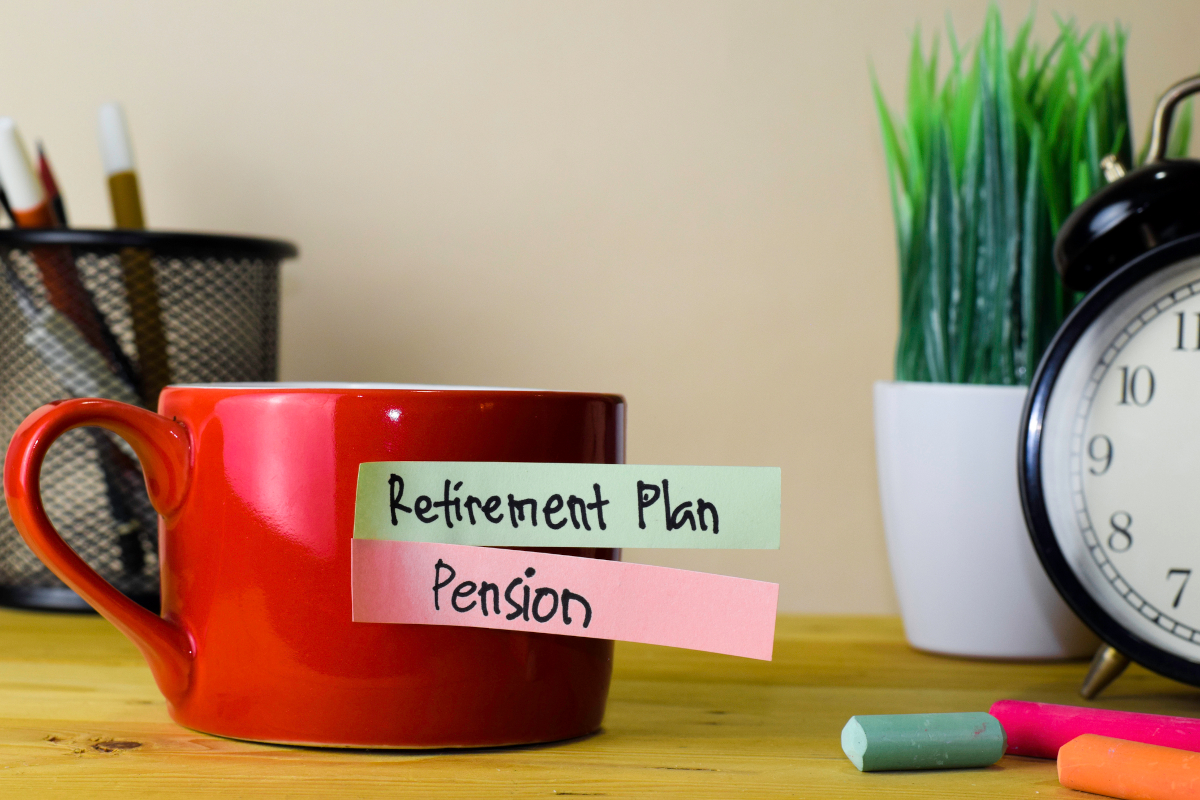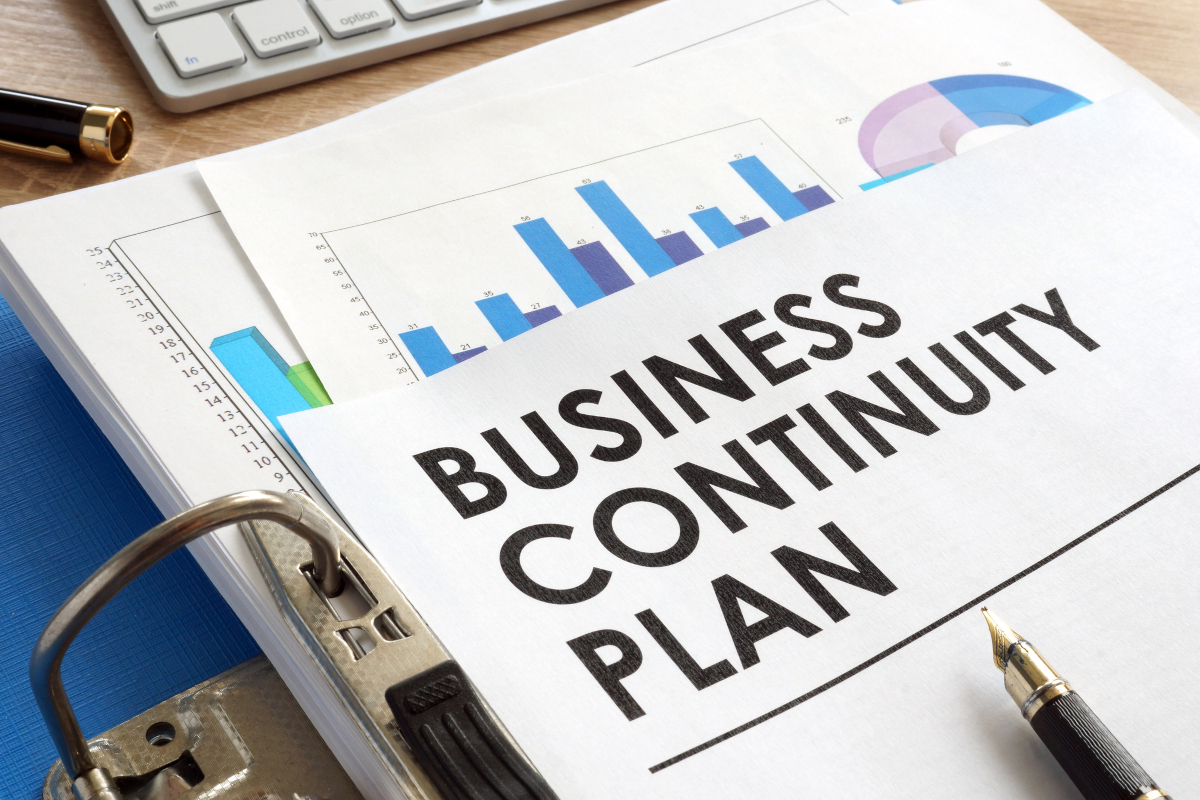As Australia’s average age continues to rise, so does the age of small business owners.
The problem is that for businesses looking to change leadership within the next five years just 27% have a succession plan in place for the CEO or MD (which is typically the retiring business owner).
This means that many business owners could find themselves scrambling to sell or pass on their businesses at the last minute without a defined plan, putting them at a disadvantage as they enter the next phase of their lives.
In this article, we’ll cover some small business retirement plan options so that doesn’t happen to you. We’ll also share some ways to implement financial planning for business owners so that you can protect and grow your retirement nest egg.

Planning your exit strategy
Planning your business exit strategy in advance is extremely important as the proceeds of your exit might be what funds your retirement.
Without a solid plan in place, you could find yourself falling short of your income goals, having to downsize or, in some cases, delaying retirement altogether. According to Investopedia, if you want to maintain your standard of living post-retirement, you’ll need to bring in at least 80% of your pre-retirement income each year.
Here’s how to create a retirement plan for a small business:
1. Set long-term goals early
It’s difficult to predict exactly what the market environment or the state of your business will be as you near retirement, so having long-term goals will help you time your exit better.
If your overall goal is to sell your business for $5 million, you’ll need to set smaller goals that will help you get there – such as revenue, year-over-year growth, etc. Not only will these keep you on track, but they can also signal the best time to exit. For example, if you haven’t quite reached your goal, but your growth is slowing down, it might be a good idea to exit while you’re ahead.
On the flip side, these goals can also signal that you need to be more aggressive with marketing and sales if you want to achieve your exit goal.
2. Plan for taxes
If you sell your business – a common retirement exit strategy – you’ll have to pay capital gains tax on your profits.
Since this tax can significantly reduce your take-home profits, it’s wise to know how you can minimise them. In Australia, there are four small business CGT concessions that you may qualify for as long as your business has aggregated annual turnover of under $2 million per year or your net assets are worth less than $6 million.
These are the additional criteria for each concession:
- Retirement concession: Upon selling your business you’re exempt from CGT up to a lifetime limit of $500,000 and you can qualify if you’re aged 55 or over, or you pay that amount into a qualifying superannuation or retirement savings account.
- Reduction on active assets: If you’ve held active assets for at least 12 months, they qualify for a 50% CGT reduction. Active assets are assets that you use to run your business or keep ready for use at any time.
- Rollover exemption for active assets: You’re eligible to defer your CGT for up to two years upon the sale of your active assets. You can further defer these taxes if you use the funds to invest in a subsequent active asset.
- 15-Year ownership concession: If you’re aged 55 or over or are otherwise unable to continue running your business (such as due to health reasons), you’re exempt from capital gains tax as long as you’ve held continuous ownership of your business for 15 years.
Other than these concessions, it’s a good idea to talk to a tax consultant to understand other ways to reduce your taxes such as optimising your business structure.
3. Think about your exit strategy
When it comes to retirement planning for business owners, you need an exit strategy.
This is all about how you plan to sell or exit your business and understanding this is vital as it will directly affect profitability and how easy it is to exit.
Common strategies include:
- Taking a salary or dividends: Instead of reinvesting as much as you can into growing your business, this involves taking a substantial amount of profit as a personal payment. On one hand, this ensures that you’re constantly receiving an income, making it easier to plan for retirement through saving or investing. On the other hand, this will likely be less tax-efficient as you’re always paying income tax. However, you can consult with an accountant to find the best ways to minimise tax with this strategy.
- Liquidation: This involves selling your company’s assets piece by piece such as your equipment, vehicles, real estate, etc. While this is the simplest strategy as it doesn’t require much legal oversight, you’ll often receive less money compared to selling your business as a whole. Additionally, the market environment will play a big role in determining the value of your assets.
- Friendly sale: Many entrepreneurs choose to go this route if they have family, employees or another acquaintance who wants to carry on the business. This is often lower stress than a typical sale as there is an existing level of trust and knowledge of the business. Additionally, there tends to be more flexibility in the exit with some people retaining part ownership of the business to diversify their retirement income. However, some owners may not maximise their exit profitability out of kindness and wanting to give the new owner the best chance to succeed.
- Market sale: This is one of the best retirement plans for small business owners with employees as market buyers tend to be serious about continuing to run the business. While this option often brings the most profitability, it tends to be complex and time-consuming as buyers will do stringent due diligence as they compare your business to other options on the market. For this reason, it’s wise to get help from a professional broker instead of trying to find buyers on your own.

4. Consult with professionals
Before you finalise your exit plan, it’s vital to consult with professionals who are versed in retirement planning for small business owners.
With the help of accountants and financial advisors, you can better position your business for a profitable exit and ensure you’re set up to reach your retirement goals. One aspect of this is getting an accurate business valuation.
It can be a good idea to get an initial valuation long before retirement so you can understand what factors affect the value of your business so that you can focus on improving them as you reach your ideal exit age.
5. Develop a contingency plan
While having a solid exit plan in place is key for ensuring a profitable exit, you should also have a contingency plan in case of curve balls.
One part of this is protecting your business with the necessary insurance policies such as income protection or disability insurance. Other aspects could include early or late retirement pivots based on the market environment and business metrics such as growth and revenue trends.
You could also adopt a hybrid exit approach to your small business retirement planning where you draw a small amount of income from your business that you use to fund savings and retirement accounts. Then you can reinvest the rest to grow your business for a larger exit later.

Traditional retirement strategies in Australia
There are many retirement strategies that entrepreneurs find success with in Australia.
Some types of retirement plans for businesses include:
- Using sale proceeds to fund retirement: The most common strategy is to rely on sale profits to fund retirement since you’ll often get a large lump sum payment, giving you a concrete number to plan for retirement. This enables you to invest the duns how you see fit. However, the success of this strategy depends on the condition of your business and industry.
- Appoint a director and continue drawing funds from the business: Instead of exiting a business, some entrepreneurs choose to rely on an employee to run the day-to-day operations. While you’d still need to have some input from time to time, it’s one way to ensure you have an income during retirement. However, market conditions and the state of your business can change at any time, meaning this income isn’t guaranteed.
- Take a salary from the business: With this strategy, you’ll be able to set aside funds in a savings or superannuation account or invest them as you see fit, such as in the stock market, bonds, gold, real estate, etc. Additionally, as the employer, your business would be obligated to pay compulsory employer contributions into a superannuation account of your choice on top of your salary. This is based on your ordinary-time earnings.

When it comes to investing for retirement you have a few options depending on the exit you choose.
The most common option will be investing your funds into a retirement savings plan (aka small business pension plans) with which you can subsequently invest in other products like stocks and bonds. You can choose a retail fund which is run by banks or investment companies that offer a wide range of investment options but generally come with higher costs.
Another option is an industry super fund which typically reinvests profits to increase member earnings. However, some of these limit participation depending on the industry of your business.
The last option is to open a self-managed super fund. While this gives you ultimate flexibility, it requires much more management, stringent record-keeping and annual audits.
However, the simplest option is to invest your funds in a high-yielding savings account. While this is a low-risk option, the reward is also significantly lower and interest rates tend to barely keep up with inflation.
FAQs

What is the best retirement plan for a business owner?
The best retirement plan for a business owner is one that helps them reach their goals. For example, if you want to maximise your profitability, you need a plan that prioritises exiting your business at the right time. You can figure this out by tracking your business valuation while improving metrics that increase your company’s value.
What is the best way to manage retirement money?
The best way to manage retirement money would be to invest in a tax-advantaged superannuation fund. This way you don’t have to worry about constantly choosing individual investments and you can choose a fund with a stellar track record.
Which retirement plan is best for self-employed?
For self-employed people, the best retirement plan is one that ensures they have enough money for their ideal standard of living while reducing risk. This could mean drawing an income from the business and using it to invest long before retirement, helping to diversify assets.
Can you get a pension as a business owner?
Retired business owners can qualify for a pension in Australia as long as they meet the relevant financial criteria. However, the pension amount is currently set at 28% of the average wage which means it’d be difficult to maintain the same standard of living they had pre-retirement.
The bottom line: planning your retirement

The bottom line when it comes to planning your retirement is that the earlier you have a concrete plan in place, the more confident you can be in reaching your post-retirement goals.
That means if you don’t already have a plan in place, now’s the time to put one together by following the steps in this article. Since taxes play a vital role in how much you can earn from your exit, make sure to read our article on tax considerations when selling a business in Australia so that you’re well prepared.
Then, when you’re ready to sell your business, consider listing your company on our website where you can gain access to hundreds of qualified buyers from around Australia.
And remember, the most important part is to plan your retirement plan well in advance. Good luck!